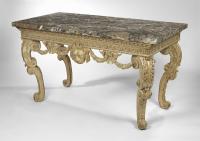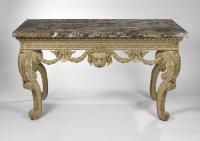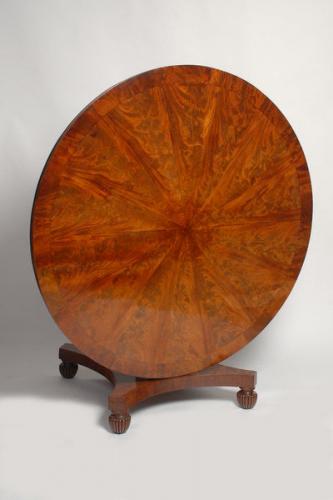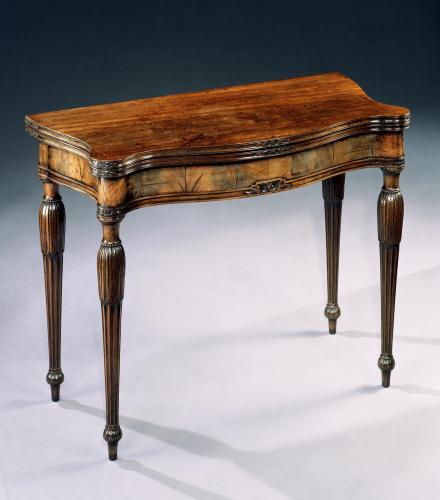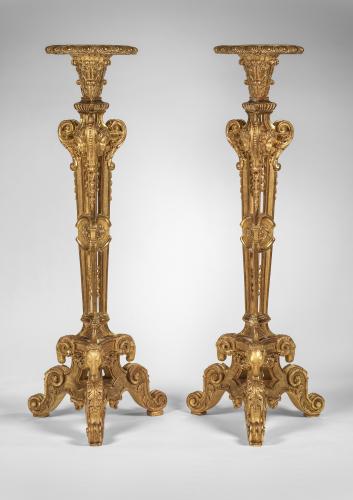
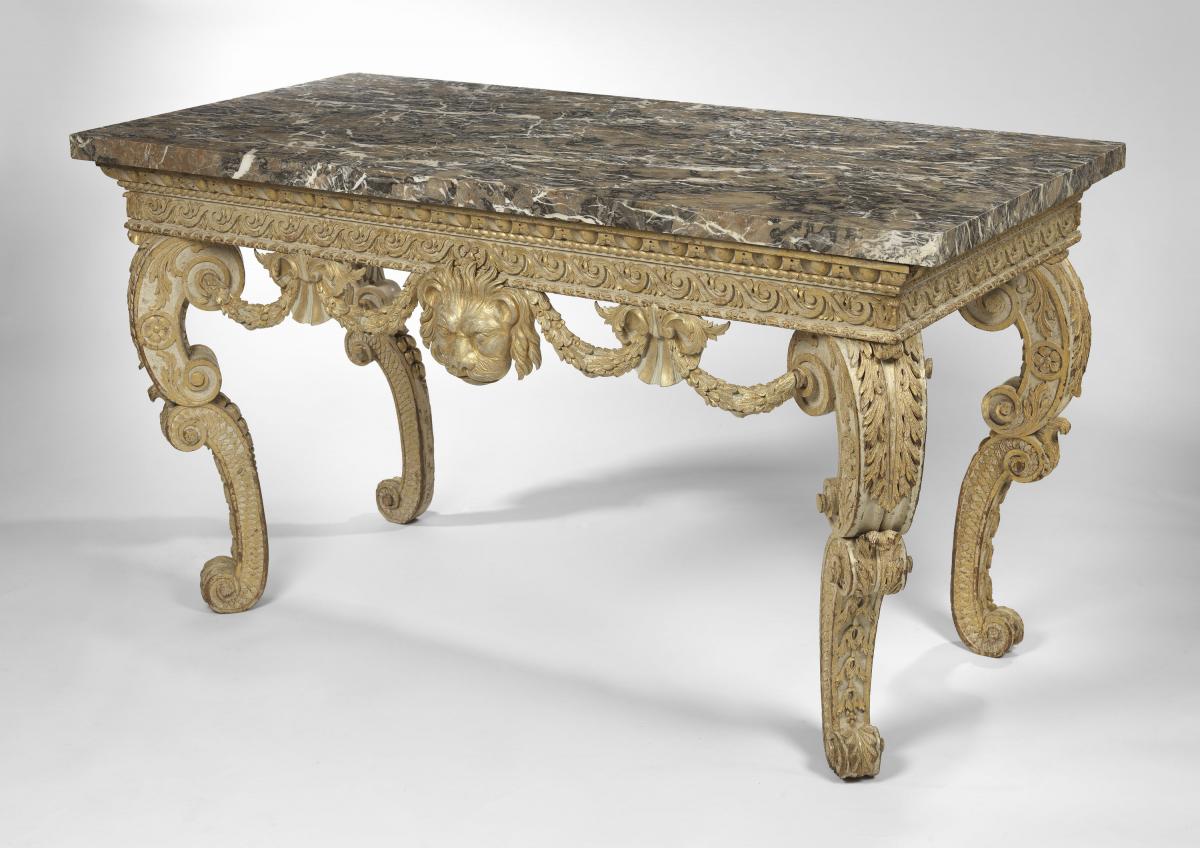
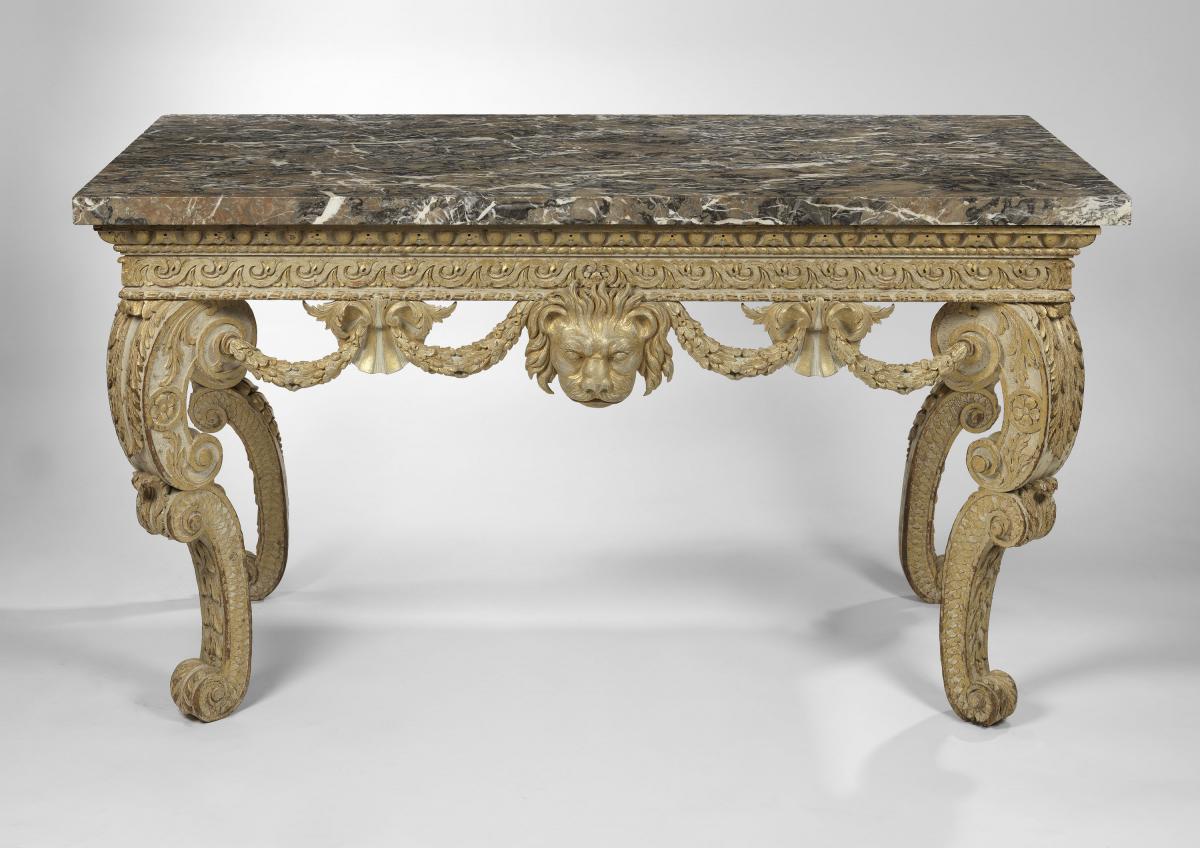
Price on application
This object is eligible for a Certificate of BADA Provenance
The BADA Standard
- Since 1918, BADA has been the leading association for the antiques and fine art trade
- Members are elected for their knowledge, integrity and quality of stock
- Our clients are protected by BADA’s code of conduct
- Our dealers’ membership is reviewed and renewed annually
- Bada.org is a non-profit site: clients deal directly with members and they pay no hidden fees
The rectangular campan pink marble top above an egg and dart and Vitruvian scroll carved frieze, on double ‘C’ scroll acanthus, paterae and carved scaley legs, the reverse carved with trailing bellflowers, on scroll feet. Lions mask and swags on either side replaced.
A similar table is illustrated in Georgian Cabinet-Makers by Ralph Edwards & Margaret Jourdain, p. 138. Fig 38. From Windsor Castle.
Provenance:
West Harling Hall, Norfolk
West Harling formerly consisted of several small manors, which in the time of William the Conqueror, were held as a berewic of the capital manor of Kenninghall by the Albinis and their successors, the de Angerville family.
About 1564, it was sold to Basingbourne Gawdy Esq, of Mendham, in Suffolk ( 1532 – 1590 ) and by descent until the end of the male line with Sir Basingbourn Gawdy Gawdy, 3rd Baronet (d. 1723 ) who left the estate to his three nieces and they conveyed the whole estate to Joshua Draper, Esq who demolished it in 1725.
He then began building a new house and sold it to Richard Gipps, Esq who bought the estate in 1736. Thence by descent to Nicholas William Ridley-Colborne, 1st Baron Colborne (1779 – 1854 ) who succeeded to the estate of his maternal Uncle, including West Harling, and assumed the name Colborne.
Sir George Edmund Nugent, 2nd Bt. (1802 – 1892 ), who in 1830, had married the second daughter of the 1st Baron Colborne, The Hon. Maria Charlotte Ridley-Colborne ( d 1883 ) and inherited the West Harling estate. Thence by descent through the Nugent family.
In 1929 it was removed from West Harling Hall, Norfolk before the Hall was demolished and was offered for sale as Lot 98 in the Puttick and Simpson sale of the contents but failed to reach its reserve and so remained in the possession of the Nugent family.
A number of pieces of Kentian furniture were included in the West Harling sale in 1929 including Lot 99 ‘A William Kent mahogany cabinet’. Similarly in the sale of the original and valuable fixtures and fittings of West Harling Hall held on the premises July 8th and 9th 1931 there were William Kent mantelpieces, overmantels, carved doors and overdoors.
Although there is no documentary evidence to link Kent with West Harling, he did however work for the Duke of Grafton at Euston Hall only a few miles from West Harling.
Dimensions
60 x 31 x 34 in high (153 x 80 x 87 cm)The BADA Standard
- Since 1918, BADA has been the leading association for the antiques and fine art trade
- Members are elected for their knowledge, integrity and quality of stock
- Our clients are protected by BADA’s code of conduct
- Our dealers’ membership is reviewed and renewed annually
- Bada.org is a non-profit site: clients deal directly with members and they pay no hidden fees


